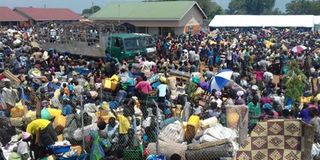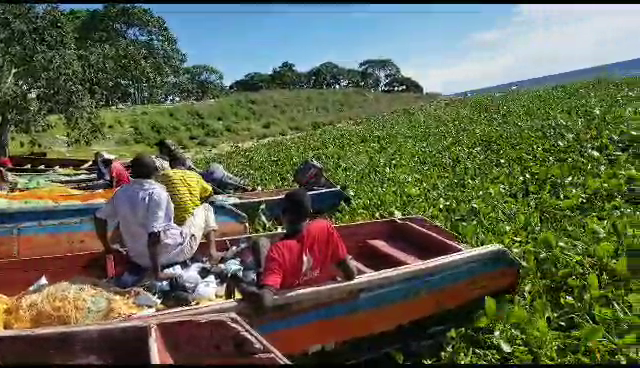Manage refugee influx with caution

Some of the South Sudan refugees gathered at the Elegu Refugees Collection Centre in Atiak sub county in Amuru District. PHOTO BY JULIUS OCUNGI
The ongoing conflict in South Sudan has led to an influx of refugees into the northern parts of Uganda. According to a United Nations High Commission for Refugees statement, more than 26,000 people have so far fled South Sudan into Uganda. The largest numbers are children and women – a vulnerable group that needs all the necessary support and protection.
It is no doubt that Uganda has had a record of being an excellent home for refugees and hosts people from different countries, including South Sudan, the Democratic Republic of Congo, Burundi, Somalia, Eritrea, Rwanda and Kenya.
However, a sudden influx of refugees such as the current one from South Sudan poses challenges for host countries and relief agencies. According to UNHCR, the influx is already stretching the capacity of collection points, transit and reception centres. Elegu collection point, for instance, is reported to be full to the extent that it is not possible to conduct a head count. This implies that new arrival figures are based on an analysis of trends throughout the day.
Although Uganda has a disaster preparedness team at Elegu border to provide food, shelter and security as well as document new arrivals, the overwhelming numbers hinder the smooth running of this process. This raises issues of security, more so in settlement camps, if refugees are not properly vetted.
In the past, security concerns were raised following a similar influx of refugees during the 2013 war in South Sudan. With thousands fleeing for safety, some wrong elements managed to enter Uganda with arms. That some refugees were found to have crossed into Uganda with bullets and army uniforms in the past should compel authorities handling refugee entry at the border points to be extra vigilant.
Additionally, in 2014, there were reported tribal clashes between South Sudanese refugees in Elegu camp in Amuru District and in Dzaipi in Adjumani District where warring tribes attacked and stabbed each other with knives. It is important that such precedent informs authorities to take precautionary measures to guarantee the security of refugees and indigenous communities. Uganda, after all, has one of the best refugee policies in the world – a policy that emphasises a rights-based approach for handling asylum seekers and refugees.
Ultimately, the solution to the refugee crisis is systematic conflict resolution and building sustainable peace. All parties to the conflict in South Sudan should rise above self-interest and work with regional bodies to engage in genuine peace building processes.




